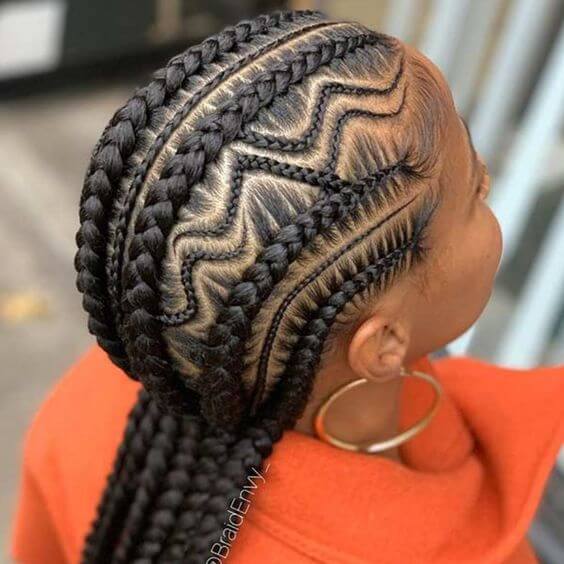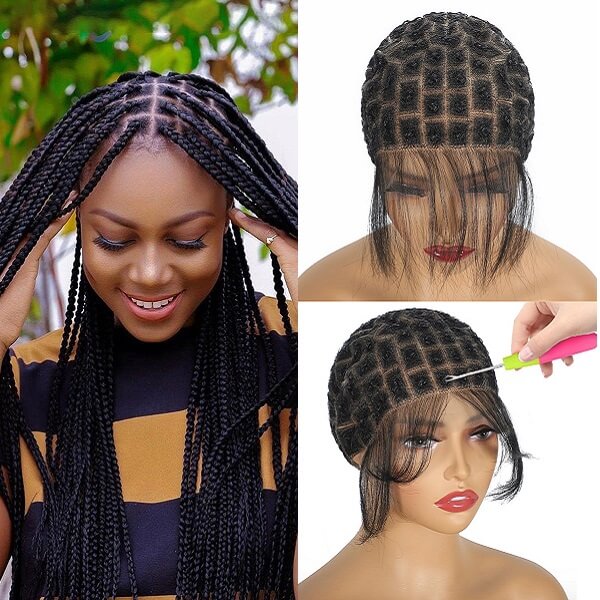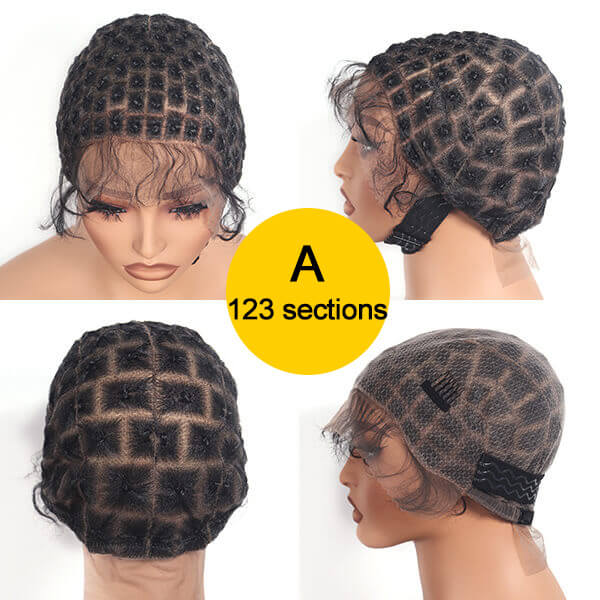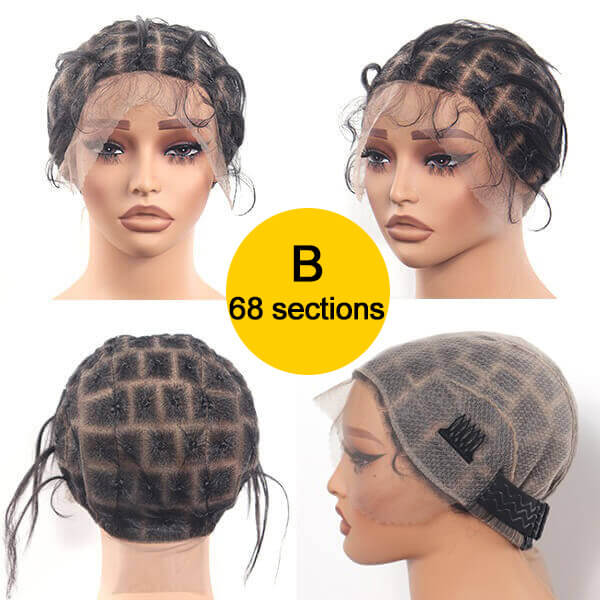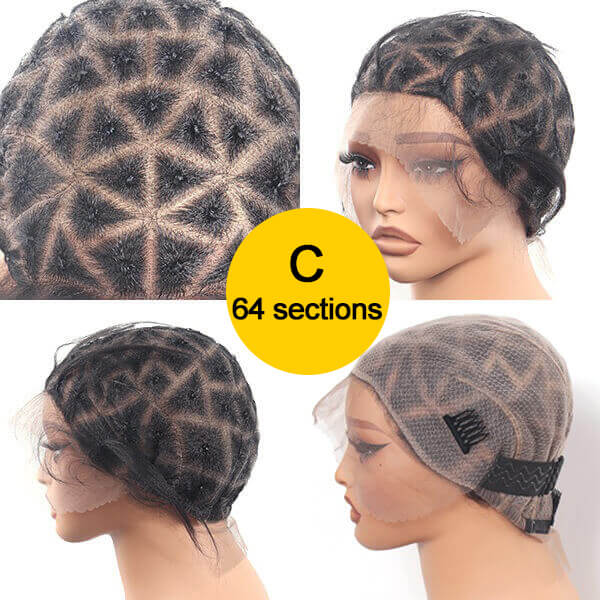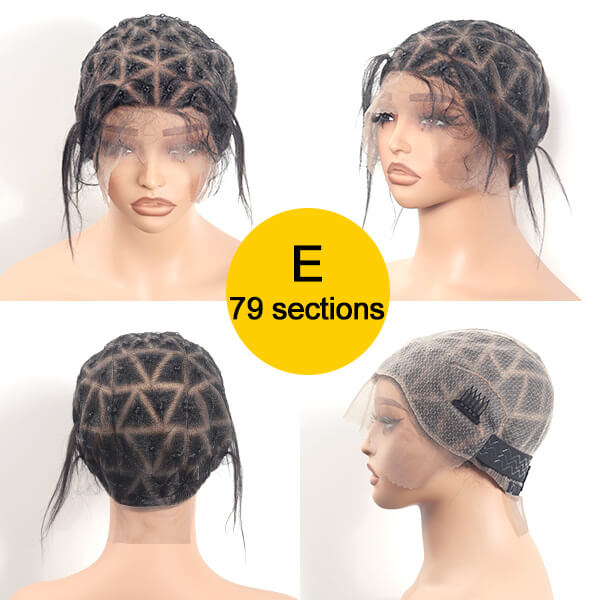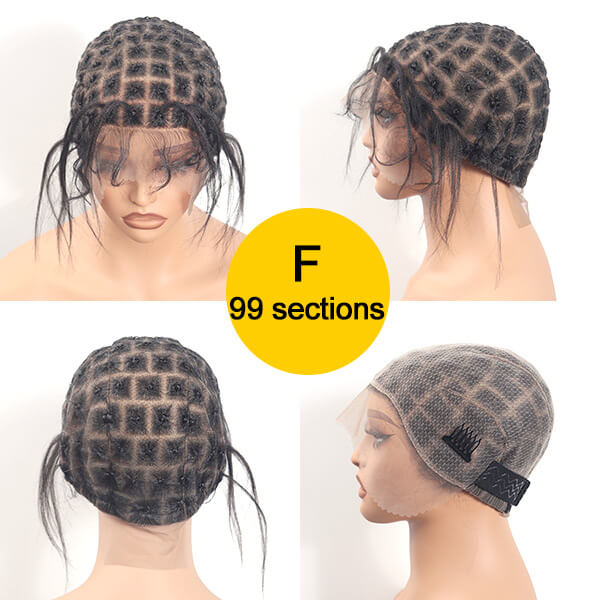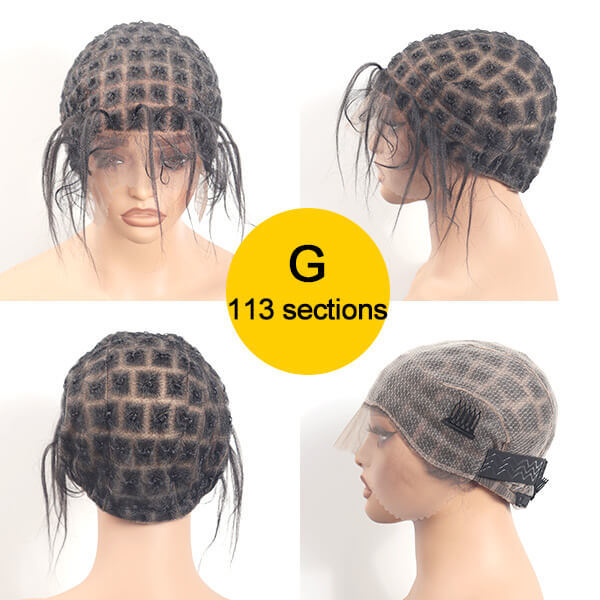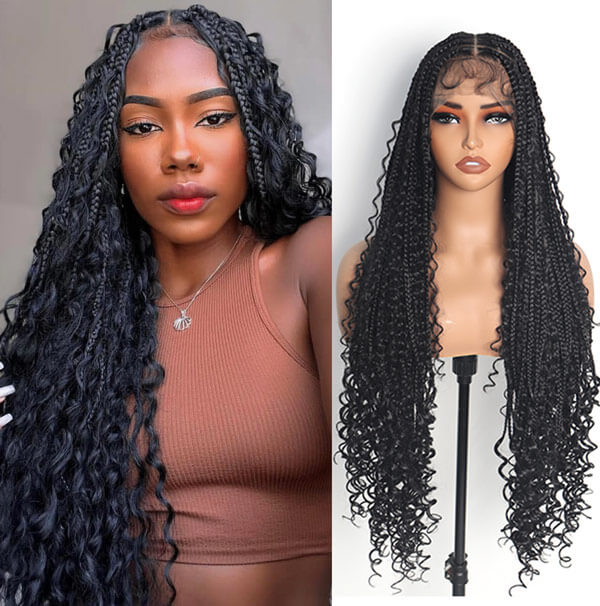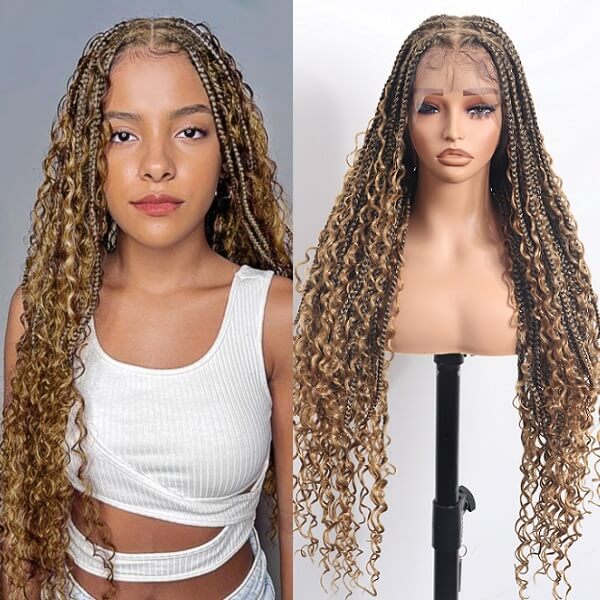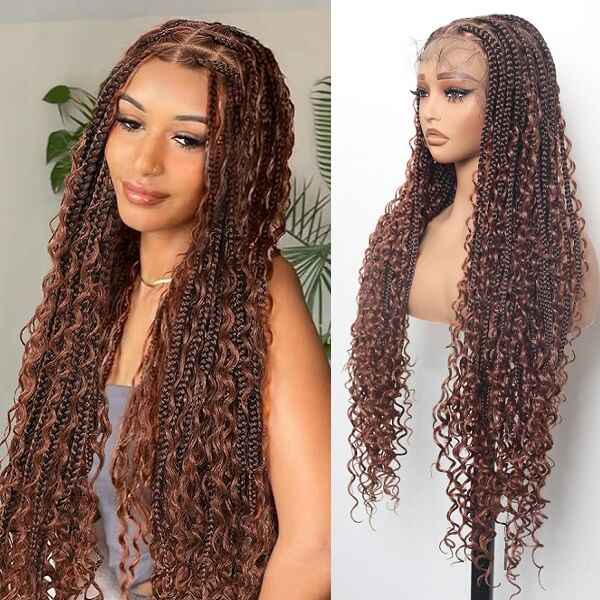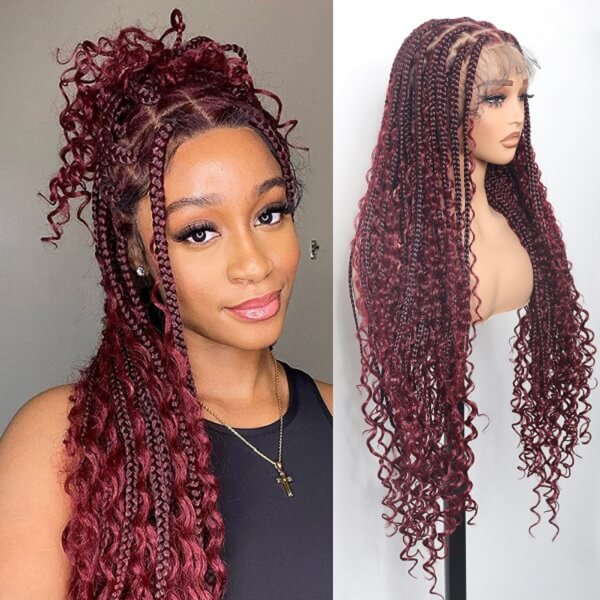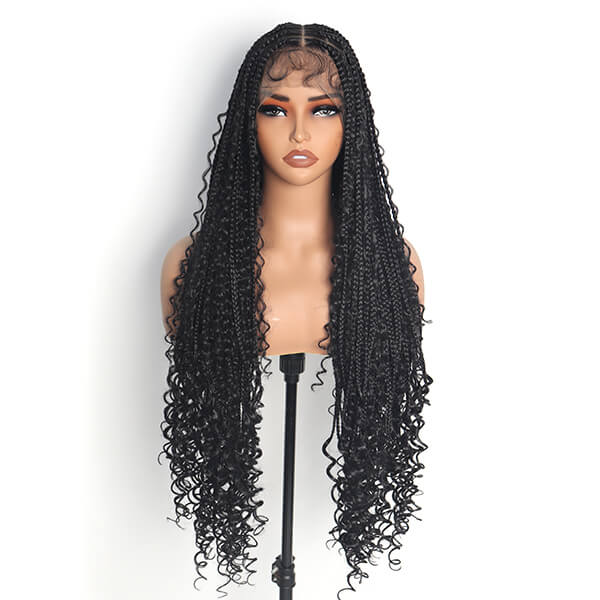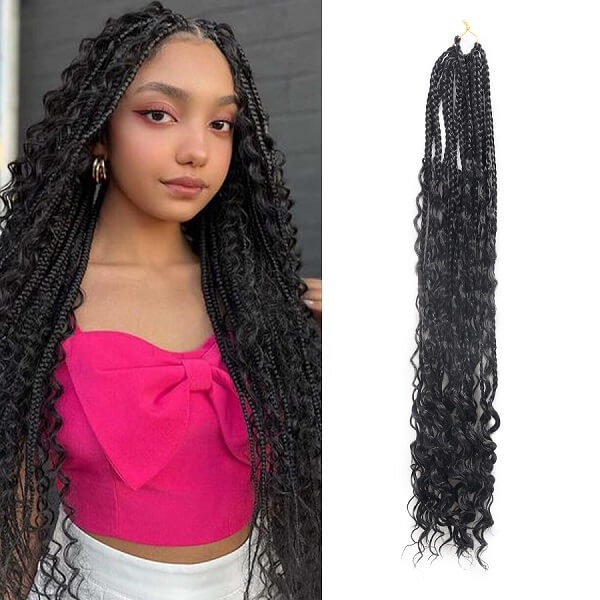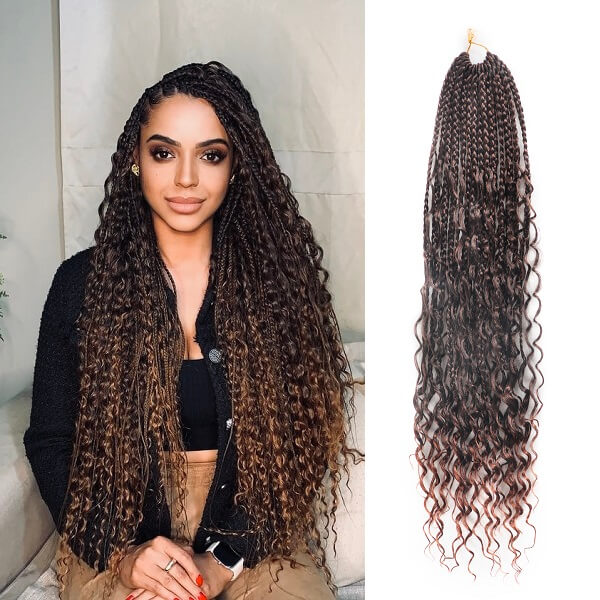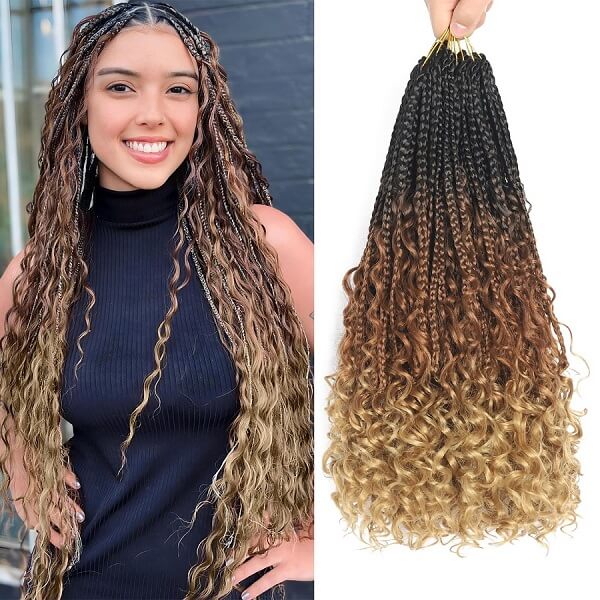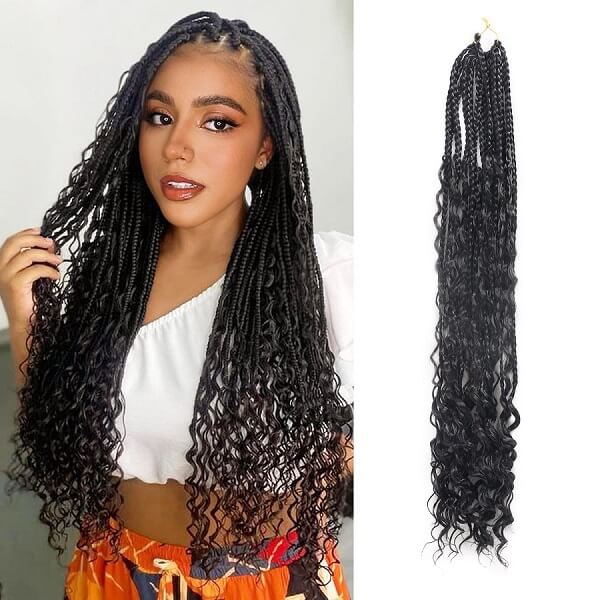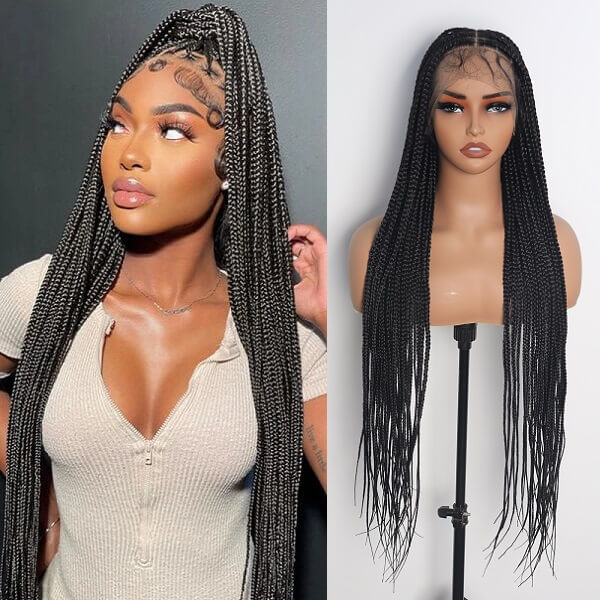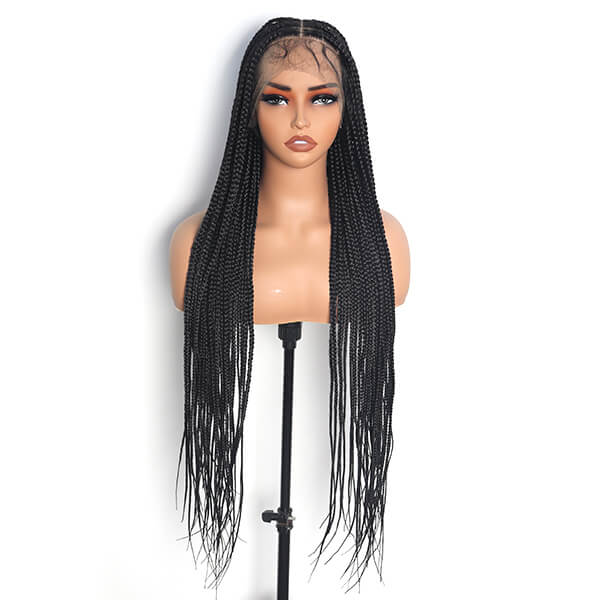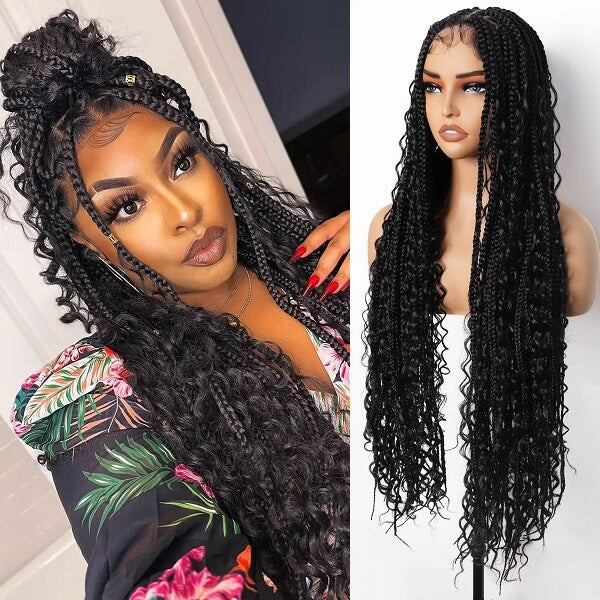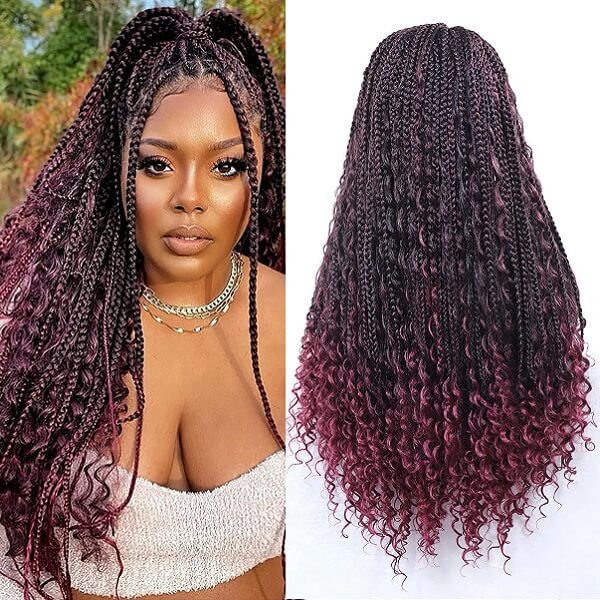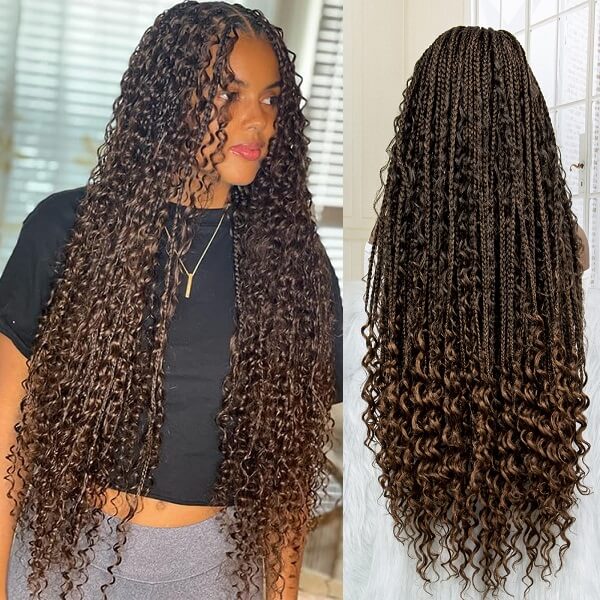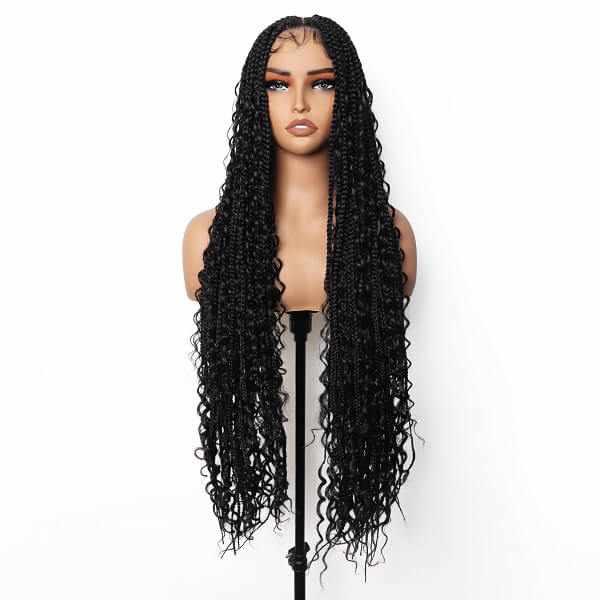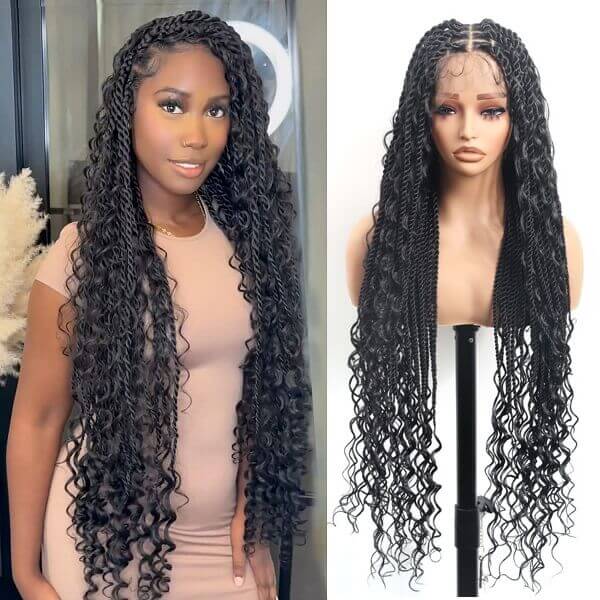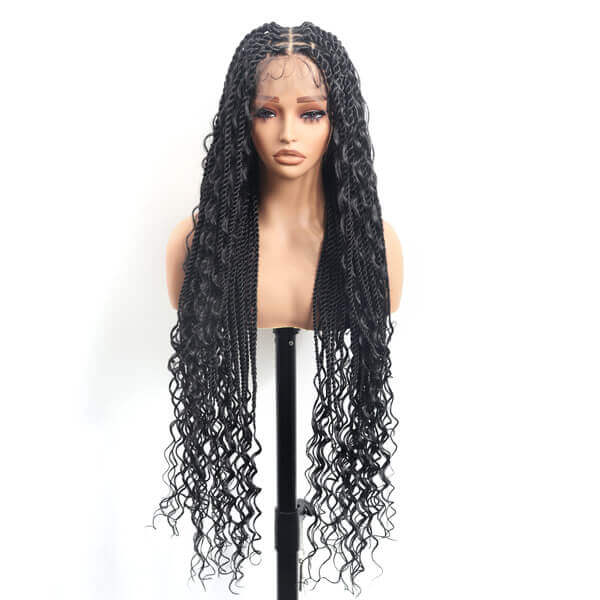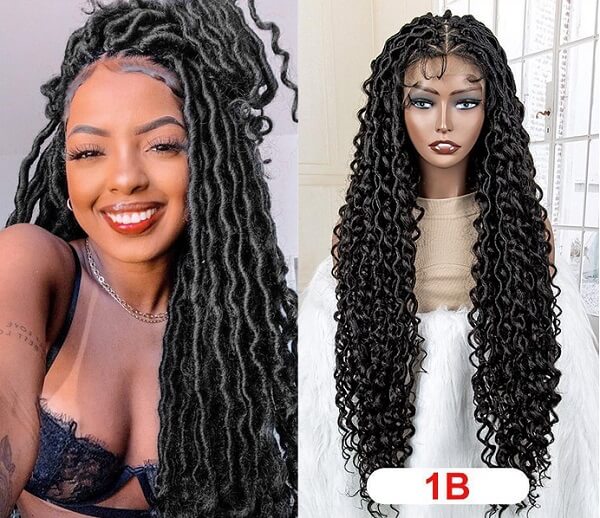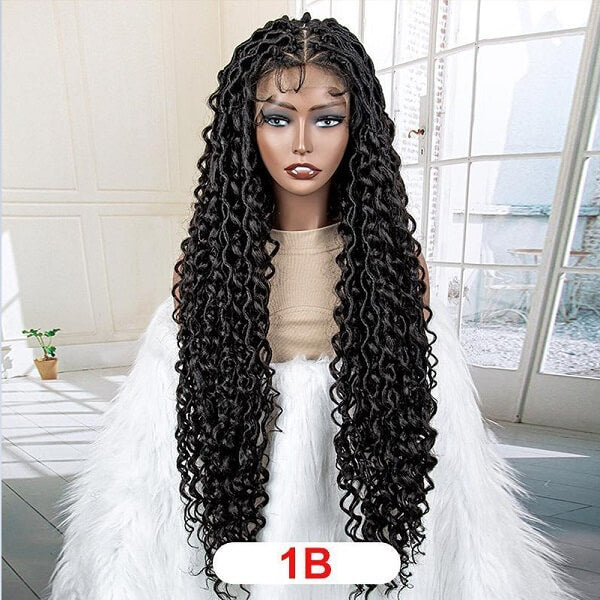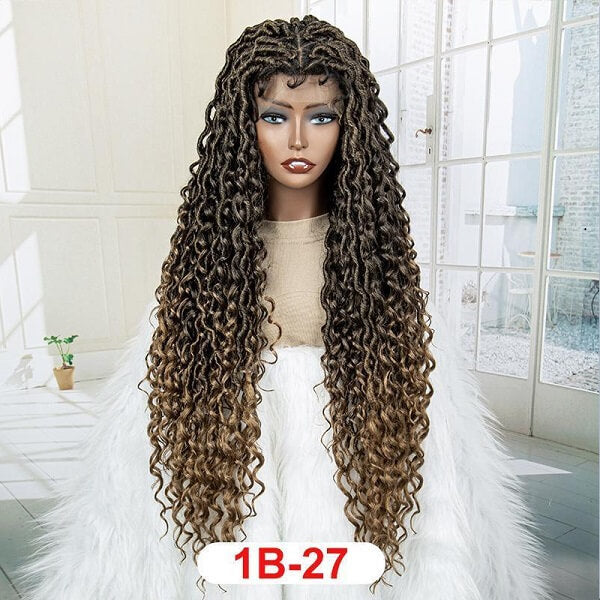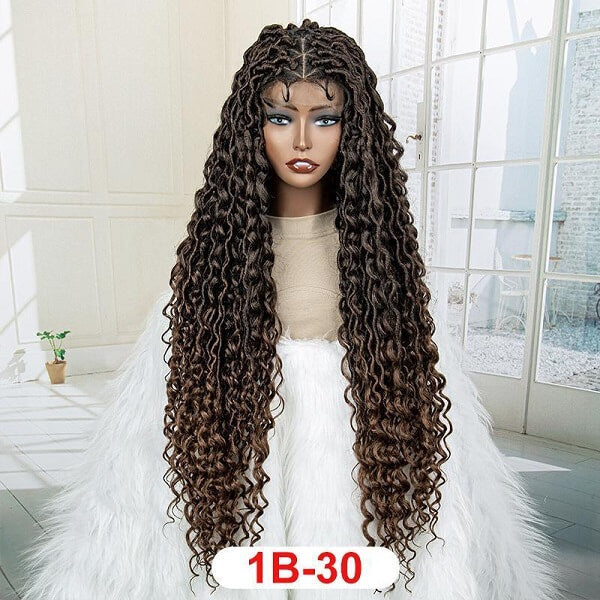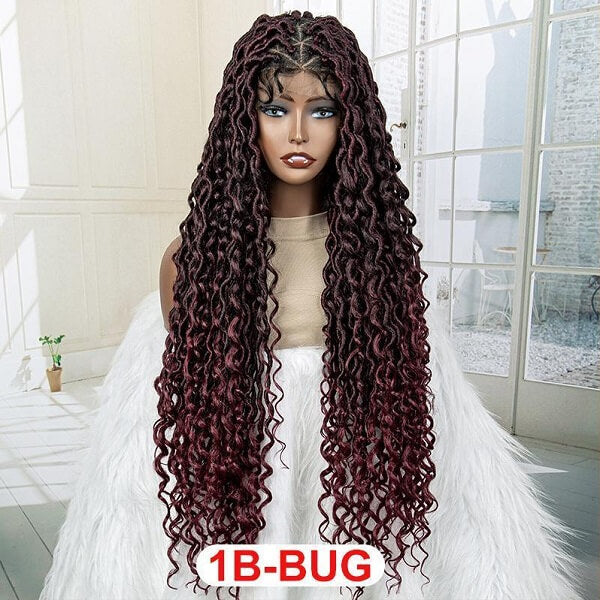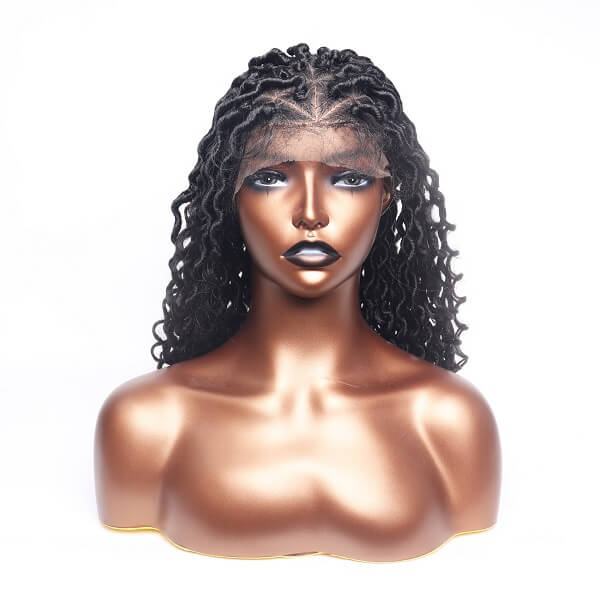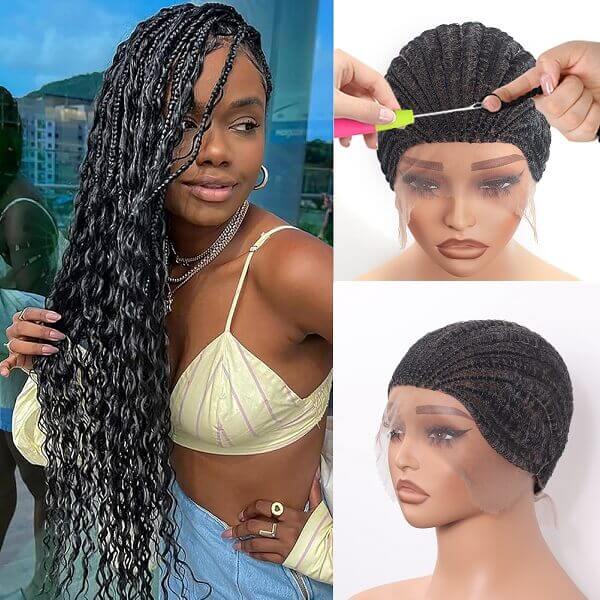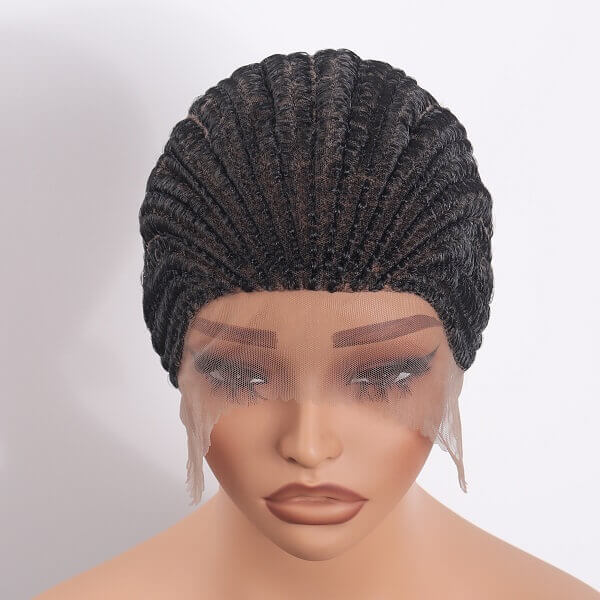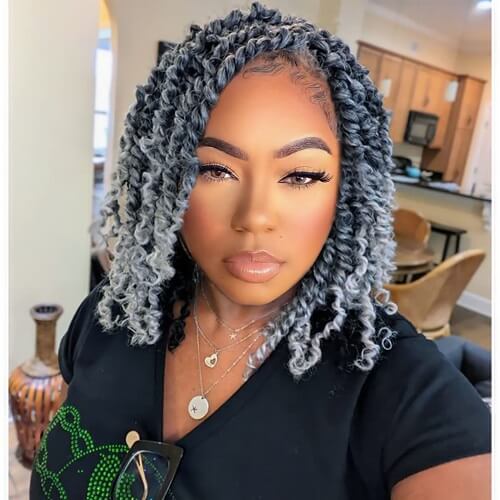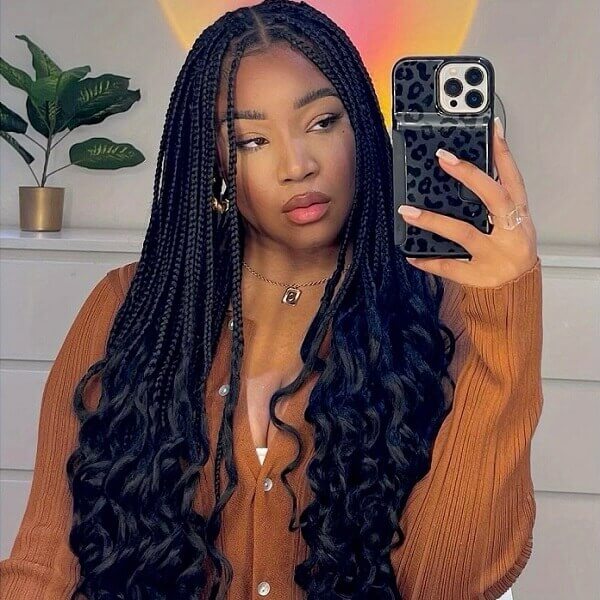Feed-in braids are a stylish and versatile protective hairstyle loved by those looking to switch up their look while maintaining hair health. Unlike traditional braiding techniques, feed-in braids involve gradually adding extensions, creating a seamless and natural appearance. This innovative approach not only minimizes tension on the scalp but also allows for various styling options, from chic updos to long, flowing braids.
Their growing popularity in the beauty community speaks volumes about their appeal. Celebrities and influencers alike have embraced feed-in braids for their ability to elevate any outfit while offering a low-maintenance solution for busy lifestyles. Whether you’re preparing for a special event or simply want to showcase your unique style, feed-in braids are an excellent choice combining elegance and practicality.

What Are Feed-in Braids?
Feed-in braids are a modern and stylish form of braided hairstyles that allow for a seamless and natural appearance. Unlike traditional braiding methods, where hair is typically divided into sections from the start, feed-in braids involve a technique where extensions are gradually added to the braid as you work your way down. This results in a more fluid and less bulky look, making them particularly appealing for those seeking a polished finish.
The process begins with your natural hair, which is braided at the base. As you continue to braid, small sections of hair extensions are added in, giving the braid depth and dimension. This method not only enhances the overall look but also reduces tension on the scalp, making feed-in braids a more comfortable option for long-term wear.
One of the key differences between feed-in braids and traditional braids lies in their application. Traditional braids often start with a full section of hair, which can lead to a heavier feel and increased stress on the roots. In contrast, feed-in braids create a gradual transition, allowing for a lighter feel and a more natural flow. This technique has made feed-in braids a favorite among individuals looking for a stylish yet protective hairstyle that doesn’t compromise comfort.

Benefits of Feed-in Braids
Feed-in braids offer a range of benefits that make them an attractive choice for anyone looking to enhance their hairstyle while maintaining hair health. Here are some key advantages:
- Reduced Tension on the Scalp: One of the standout features of feed-in braids is their ability to minimize tension on the scalp. Because the technique involves gradually adding hair extensions rather than starting with a full section, there’s less pulling on your roots. This reduced tension can lead to a more comfortable experience, making it easier to wear the style for extended periods without discomfort or hair loss.
- Versatility in Styling Options: Feed-in braids are incredibly versatile, allowing for a variety of styles, sizes, and lengths. Whether you prefer chunky, bold braids or thin, delicate ones, this technique can accommodate your preferences. Additionally, feed-in braids can be styled in numerous ways—pulled into an elegant updo, worn down, or even accessorized with beads and clips, giving you endless options to express your personal style.
- Low-Maintenance and Protective Nature: Another significant benefit of feed-in braids is their low-maintenance nature. Once styled, they require minimal upkeep, making them perfect for busy lifestyles. They act as a protective style, shielding your natural hair from environmental damage and reducing the need for daily manipulation. This protective quality helps promote hair growth and health, making feed-in braids an ideal choice for anyone looking to maintain their hair's integrity while enjoying a fashionable look.
Overall, feed-in braids combine style, comfort, and practicality, making them a popular choice in the beauty community.
How to Do Feed-in Braids? (Step by Step)
Creating feed-in braids can seem daunting, but with the right preparation and technique, you can achieve stunning results. Here’s a step-by-step guide to help you master this trendy hairstyle.
Preparation
Tools and Materials Needed:
- Hair extensions (preferably Kanekalon or similar synthetic hair)
- Wide-tooth comb
- Rat-tail comb for parting
- Hair clips or ties to section off hair
- Edge control or styling gel for sleekness
- Scissors (for trimming excess extension hair)
- Hair moisturizer or oil (for added shine)
Recommended Hair Types and Colors:
- Choose extensions that match your natural hair texture for a seamless look.
- Consider colors that complement your skin tone or opt for bold shades for a fun pop. Blending natural and colored extensions can create a beautiful ombre effect.
Step-by-Step Instructions
Step 1: Sectioning the Hair:
- Start with clean, dry hair. Use a wide-tooth comb to detangle your hair gently.
- Part your hair into manageable sections using a rat-tail comb. Clip or tie each section to keep them separate. You can create straight or zig-zag parts, depending on your preference.
Step 2: Starting the Braid with Natural Hair:
- Take a small section of your natural hair at the front and divide it into three equal parts to start your braid.
- Begin braiding the natural hair using a basic three-strand braid technique for about two to three stitches to establish a solid base.
Step 3: Gradually Adding in the Extensions:
- As you continue braiding, take a small piece of your extension hair and place it alongside one of the sections of your natural hair.
- Braid this extension hair in with your natural hair, incorporating it smoothly as you go. Repeat this process, adding more extension hair in small increments until you reach the desired thickness and length.
- Make sure to blend the extension hair evenly throughout the braid to achieve a natural look.
Step 4: Tips for Maintaining Even Tension and Achieving a Smooth Finish:
- Keep a consistent grip on the sections of hair to maintain even tension throughout the braid. Avoid pulling too tightly, as this can lead to discomfort and stress on the scalp.
- Use a little edge control or styling gel on your natural hair and around the edges to create a sleek finish.
- Once you reach the desired length, secure the braid with a hair tie and trim any excess extension hair if needed. You can also dip the ends in hot water for a polished look.
By following these steps, you’ll be well on your way to creating beautiful feed-in braids that not only look great but also feel comfortable and protective for your natural hair. Enjoy your new style!
How Long Do Feed-in Braids Last?
Feed-in braids generally last anywhere from 4 to 8 weeks, depending on various factors such as your hair type, the braiding technique, and your maintenance routine. While they can be worn longer, it’s essential to monitor your scalp and hair health to avoid damage.
Factors That Influence the Longevity Of Feed-in Braids
- Hair Type:
Different hair types react differently to braids. For example, coarser hair may hold braids longer, while finer hair may experience slippage or frizz more quickly.
- Braid Size:
The size of the braids can significantly impact their durability. Small-size braids tend to last longer than larger braids because they are less prone to loosening and maintain their structure better over time.
- Environmental Factors:
Conditions such as humidity, heat, and sweat can affect how well your braids hold up. High humidity can lead to frizz, while excessive heat or sweating may cause the braids to loosen or become uncomfortable.
- Maintenance Routine:
How you care for your braids plays a crucial role in their lifespan. Regular cleaning, moisturizing, and protecting your scalp can significantly extend the time you can wear them.
- Lifestyle:
Activities such as swimming, frequent workouts, or exposure to harsh weather can affect how well your braids hold up. If you lead an active lifestyle, you may need to pay extra attention to maintenance.

Tips for Extending the Life of Feed-in Braids
- Keep Your Scalp Clean:
Regularly cleanse your scalp with a gentle shampoo or scalp cleanser to prevent buildup. Use a spray bottle to apply the cleanser directly to your scalp for easy access.
- Moisturize:
Apply a light oil or leave-in conditioner to your scalp and the length of your braids. This helps prevent dryness and keeps your hair healthy.
- Protect at Night:
Use a satin or silk scarf, bonnet, or pillowcase to protect your braids while you sleep. This reduces friction and helps maintain your style.
- Avoid Excessive Manipulation:
Minimize the number of times you re-braid or twist your hair during the wear period. Too much manipulation can lead to frizz and loosened braids.
- Be Mindful of Tension:
Avoid putting too much tension on your braids, especially around the edges, to prevent breakage and discomfort.
By following these tips and understanding the factors that influence the longevity of feed-in braids, you can enjoy your stylish look while keeping your hair healthy and protected for as long as possible!

Common Mistakes to Avoid When Getting Braids
When creating feed-in braids, it's essential to be mindful of common mistakes that can impact the style and the health of your hair. Here are some pitfalls to watch out for:
- Overloading on Hair Extensions: One of the most frequent mistakes is using too much hair when adding extensions. Overloading can lead to heavy, bulky braids that place unnecessary tension on your scalp, potentially causing discomfort or hair loss. Instead, aim to add small amounts of extension hair gradually to maintain a natural look and feel.
- Not Prepping the Hair Properly: Failing to properly prepare your hair before braiding can affect the outcome of your feed-in braids. Skipping steps like washing, detangling, and moisturizing can lead to frizz, uneven sections, and an overall messy appearance. Take the time to cleanse and condition your hair, ensuring it's well-nourished and detangled before you start braiding.
- Skipping Aftercare: Aftercare is crucial for maintaining the longevity of your feed-in braids and the health of your natural hair. Neglecting to cleanse your scalp or moisturize your braids can lead to buildup, dryness, and potential scalp irritation. Implement a simple aftercare routine that includes regular scalp cleansing and moisturizing to keep both your braids and natural hair in top condition.

Styling Ideas with Feed-in Braids
Feed-in braids offer incredible versatility, allowing you to create a variety of stunning looks. Here are some creative styling ideas to elevate your feed-in braids:
- Auburn Feed-in Box Braids Updo

For a chic and sophisticated look, try an auburn knotless braids updo. Gather your braids into a sleek bun at the crown or back of your head, allowing a few face-framing pieces to soften the style. The rich auburn color adds warmth and dimension, making this an eye-catching choice for any occasion.
- Straight-Back Stitch Braids into a Low Bun

Opt for a clean and polished look with straight-back stitch braids leading into a low bun. This style is perfect for keeping hair off your neck while maintaining a sleek appearance. It’s an excellent choice for professional settings or formal events.
- Two Braids with Flowing Curly Tresses

Combine simplicity and elegance by styling two cornrows that flow into loose, curly tresses. This look beautifully showcases your braids while allowing your curls to cascade freely, creating a romantic and effortless vibe.
- Straight-Back Stitch Braids with Crochet Curls

For a playful twist, incorporate crochet curls into your straight-back cornrows. This style adds volume and texture, giving your look a fun and dynamic flair. You can choose different curl patterns or lengths to suit your style preferences.
- Lemonade Braid with Heart Shape

Make a bold statement with a lemonade braid styled into a heart shape at the nape of your neck. This creative and intricate design is perfect for special occasions, adding a unique touch to your overall look.
- Incorporating Accessories for Added Flair
Accessories can elevate any feed-in braid style. Consider adding beads, cuffs, or colorful thread to your braids for a personalized touch. Hair clips and bands can also be used to create visual interest and complement your outfit.
These styling ideas highlight the versatility of feed-in braids, allowing you to express your creativity and showcase your unique personality. Whether you're dressing up for a special event or keeping it casual, there’s a feed-in braid style for every occasion!
Conclusion
Feed-in braids are not just a trendy hairstyle; they offer a low-maintenance and stylish solution for anyone looking to enhance their look while protecting their natural hair with minimal tension. With their versatility and comfort, feed-in braids can easily become your go-to style for any occasion, from casual outings to formal events.
If you’re ready to embrace this chic hairstyle, don’t hesitate to give feed-in braids a try! For those who want to explore more options, visit mybraidedwig.com for hand-tied braided wigs and styling choices that cater to your unique style. Whether you’re seeking the perfect braid or looking to experiment with new trends, we have everything you need to elevate your hair game!
Related Articles:
Stitch Braids vs. Cornrows: What Is The Difference?
50 Stunning Lemonade Braids Hairstyles
50 Stunning Knotless Braids Hairstyles You Need to Try!

